Make the Web a More Colorful Place!
A guide to using new color spaces & formats with OddContrast
OddBird’s color tool not only checks contrast ratios, but supports the new CSS color formats and spaces.

Part 1 – Responsive Web App vs Native Mobile App vs Progressive Web App
The decision of what platform to use to build your app is quite important – affecting project scope, timeline, and budget. But understanding the differences between a responsive web app, a native mobile app, and a progressive web app – and deciding which one is right for your project – can seem insurmountably difficult. Welcome to part 1 of a three-part series unpacking the reasons to choose one platform over another. Let’s start with responsive web apps.
You have an idea for a custom digital product you’d like to build, and it’s time to decide how to build it. One of your friends swears you won’t succeed unless you build a native mobile app for iPhone. A colleague argues that a responsive web app is the only way to go. Who’s right? Are there alternative options?
The great news is that you don’t need to spend years becoming a web developer yourself in order to make a wise choice. In the following three-part series, we’ll dig into the three main options for building mobile apps – responsive web apps, native mobile apps, and progressive web apps – and how to determine the best option for your project. As you read, think about who your app will serve, what their most pressing needs are, and how your app will meet those needs.
Read all three parts to compare app types:
Here are the biggest differences in a nutshell:
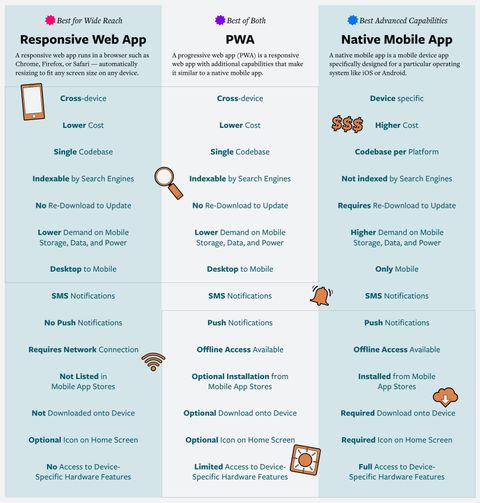
TL;DR – If your top priority is to reach as wide a range of people as possible, as quickly as possible, while keeping development and maintenance costs down, a responsive web app is likely the best option for building your digital product.
A responsive web app is essentially a website that resizes and rearranges its content – responding to fit whatever screen size a person chooses to use. RWAs are built using standard web technologies like HTML, CSS, and JavaScript. They are accessible from any device with a web browser such as Chrome, Firefox, Microsoft Edge, Safari, or a mobile browser.
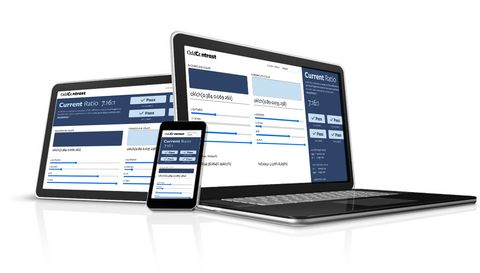

Choose a responsive web app when it’s important to keep initial development costs low.
Responsive web apps use a single codebase.[1] Compared to native mobile apps, RWAs are relatively inexpensive to develop, requiring just one codebase to be available on any device with a web browser.
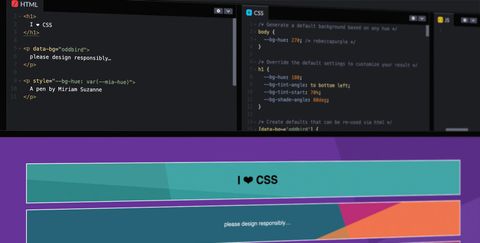
To be clear, building any kind of app is not a low cost endeavor. Even a very simple responsive web app can have a starting price of $10K, and very complex web apps, such as social media platforms or project management software, cost many millions of dollars to design, develop, and maintain.
Here’s the good news: a responsive web app can later be turned into a progressive web app. So a responsive web app can be a good first step even if you plan to add more capabilities later.
Choose a responsive web app when it’s a priority to make your app available to users quickly.
RWAs take less time to build, relative to native mobile apps; it only takes one codebase to reach any device with a browser. It can also take less time to make the minimum viable product[2] (MVP) available to an initial set of users, get feedback, and release frequent, incremental updates.
It’s important to remember, even a very simple responsive web app can still take a few months to build. Very complex apps often take multiple years to design and develop. If you want to make sure you’re meeting the needs of the people who use your app, you will want to allow time to collect their feedback along the way and make improvements, no matter what type of app you choose.

Choose a responsive web app when you need to keep ongoing maintenance costs low.
Responsive web apps require less time and expense to maintain compared to native mobile apps. An RWA’s single codebase is built with standard web technologies, and doesn’t require an update of the entire app to make incremental improvements. It also takes less time and fewer developers to update a single codebase than to update separate codebases that use specialized technology for multiple platforms.

Choose a responsive web app when the people you want to reach will look for your content with a search engine.
Search engines, like Google, crawl the web looking for keywords and other information to sort and rank the results. Then they collect, process, and store a database of all that content. This is called indexing. RWAs live on the web, so unless special code is added to prevent it, they will automatically be indexed and appear in organic search results.

Choose a responsive web app when you want to reach a broad audience across various devices.
People can access the same RWA on any device – from a small phone to a tablet, from a laptop to a giant desktop – unlike native mobile apps, which are limited to specific supported mobile devices. Additionally, the web provides a high level of backward compatibility,[3] meaning RWAs can be available in some form even on old devices. On the other hand, one platform update can totally block a device from accessing a native mobile app.


Don’t choose a responsive web app when your project requires a high level of specialized capability.
RWAs cannot access all of a device’s hardware and software features. For example, if your digital product requires direct integration with a specific mobile device’s GPS for geofencing or access to light and proximity sensors, then an RWA won’t work.
It is possible to access some advanced device features in the context of an RWA, but then you would be moving into the progressive web app space.
Don’t choose a responsive web app when you need advanced performance.
If a person has a slow internet connection, they will have trouble accessing RWA content that requires a lot of processing power – like videos or animated games. If they have no internet connection, they will not be able to access an RWA at all.
Don’t choose a responsive web app when you require advanced security.
If your project needs advanced security beyond typical HTTPS encryption, such as with banking applications, an RWA is less likely to be able to meet those requirements.
Don’t choose a responsive web app when the people you want to reach will look for your app in an app store.
RWAs are not listed in app stores. If the people you want to reach exclusively use app stores – such as Google Play or the Apple App Store – to search for apps, they will not be able to find a responsive web app.
A responsive web app tends to be less expensive to build than other types of apps – especially native mobile apps – and offers the broadest reach. But if you have specialized needs around performance,[4] security, or availability in app stores, one of the other two types of apps – a native mobile app or a progressive web app – are probably going to be a better fit. In the next part of this series, we’ll take a look at the pros and cons of native mobile apps.

Is a native mobile app right for your digital project? Read more about When to Choose a Native Mobile App.
The term codebase is developer-speak for the collection of code used to build an application. ↩︎
An MVP or minimum viable product is a version of a product with just enough features to be usable by initial users who can provide feedback for future product development. ↩︎
A technology has backward compatibility when it can operate with or take input from an older system. ↩︎
In the context of the web, performance refers to the speed at which web pages are downloaded and displayed on a web browser. ↩︎
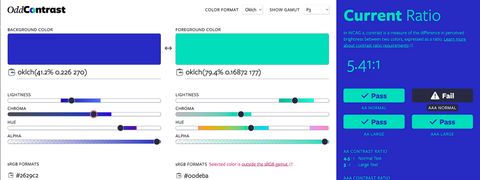
A guide to using new color spaces & formats with OddContrast
OddBird’s color tool not only checks contrast ratios, but supports the new CSS color formats and spaces.

hint popovers, position-area and more
We have been busy updating the Popover and CSS Anchor Positioning Polyfills, but there is still more we can do with your help.
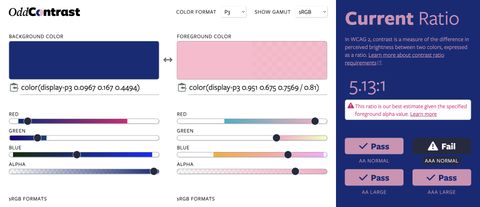
Display color gamut ranges and more
OddContrast, OddBird’s color format converter and contrast checker, gets new features – including the ability to swap background and foreground colors, and display color gamut ranges on the color sliders. Contrast ratios now incorporate foreground color alpha values.